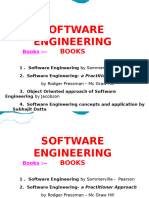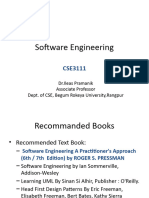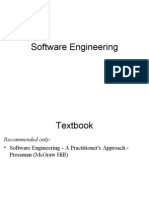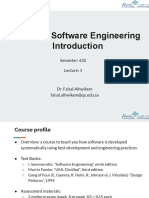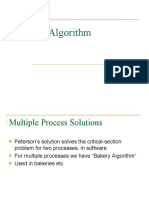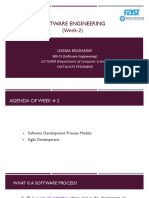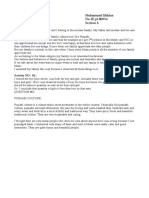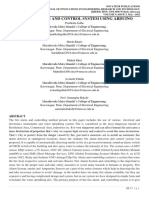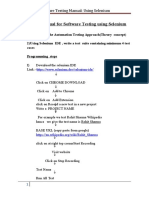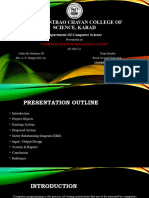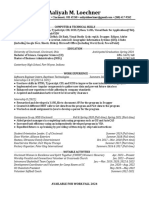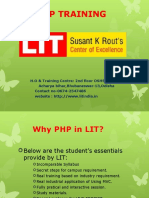0% found this document useful (0 votes)
133 views50 pagesSoftware Engineering (Week-1)
This document provides an overview of a software engineering course being taught by Usama Musharaf. The course covers topics like project management, software specification, requirements engineering, system modeling, software design, quality assurance, and more. It recommends two textbooks and lists the objective of the course as familiarizing students with fundamental SE concepts, techniques, and tools to develop high-quality, reliable software. The agenda for week 1 includes introductions to SE, its importance, phases, related activities, problems in development, and software myths.
Uploaded by
muhammad iftikharCopyright
© © All Rights Reserved
We take content rights seriously. If you suspect this is your content, claim it here.
Available Formats
Download as PDF, TXT or read online on Scribd
0% found this document useful (0 votes)
133 views50 pagesSoftware Engineering (Week-1)
This document provides an overview of a software engineering course being taught by Usama Musharaf. The course covers topics like project management, software specification, requirements engineering, system modeling, software design, quality assurance, and more. It recommends two textbooks and lists the objective of the course as familiarizing students with fundamental SE concepts, techniques, and tools to develop high-quality, reliable software. The agenda for week 1 includes introductions to SE, its importance, phases, related activities, problems in development, and software myths.
Uploaded by
muhammad iftikharCopyright
© © All Rights Reserved
We take content rights seriously. If you suspect this is your content, claim it here.
Available Formats
Download as PDF, TXT or read online on Scribd
/ 50












